Production
Field Production
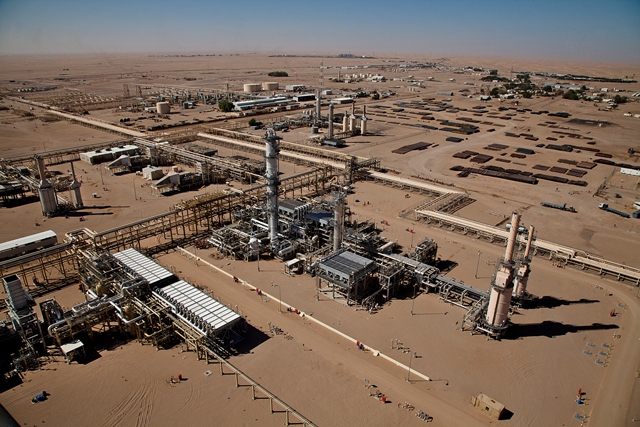
The Field Operations department is divided to 3 main sub-departments: 1.
Production Department The production department consists of three main areas:
A. Field Operations: Field operations take care of all active wells (producing, disposal, injection, and water wells). All wells (more than 600) are monitored two to three times a day.
It also cleans wells and flow lines through pump trucks and coiled tubing units. The Field Operation sections are controlled at the CPU and KPU. All other fields are operated through these units, depending on distance.
B. Facility Operations Facility operations handle all crude separation processes that separate oil, gas, and water. It also operates the utility and power generation areas.
C. Workover Group: The workover group is responsible for well workover and completion after drilling.
It consists of an engineering group at the CPU that monitors all drilling rigs.
Their scope is to remedy mechanical problems with the wells such as leaking packers, casings, and tubings.
The workover group also repairs the formation of the well if becomes non-productive or reduced in efficiency.
These three Field Operation sub-departments are managed by production superintendent.
The superintendent directs field supervisors, production foremen, and shift supervisors.
The superintendent also manages rigs through the senior production engineer.
Block-18 Production Facilities
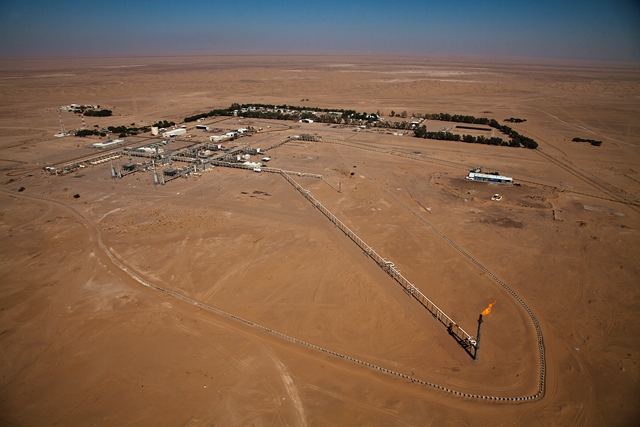
Oil is processed through two main facilities in the Marib area; these facilities are the Central Production Unit (CPU) and the Kamil Production Unit (KPU).
Al Raja, Al Shura, and Raydan are three smaller facilities connected to the CPU and KPU facilities; SEPOC receives crude oil from JHOC, OMV, and Calvalley for processing and export through our pipeline.
SEPOC also supplies Marib Refinery Company with 10,000 bbls per day.
CPU is the collection point for all SEPOC facilities. There are three gas plants, two cryogenic, and one lean oil plant capable of processing crude oil through vessels arranged according to pressures: from over 1000 psi to 1 atm.
As the oil from each vessel is metered to a lower pressure, separated gas goes to headers and is transferred to the gas plants or is compressed for injection; water collects and is pumped to special disposal wells.
This process separates oil, gas, and water, and removes all salts and sediments from the oil.
There is also a freshwater injection system that injects fresh water into wells and pipelines for sediment removal.
CPU is the main gathering process facility for Block-18 Fields, 416 wells are connected to the CPU process facility through production and injection flow lines with many production manifolds
16 fields (Alif, Azal, Wadi Bana, Jabal Barat, Jabal Sama, Jabal Samadan, EL-Wehada Noqum, Wadi Saba, Shura, Yazen, and Mawza, etc..) are flowing to the 6 process trains A, B, C, D, E and F trains.
CPU process facility includes five main production manifolds, these manifolds are North Manifold (NM), South Manifold(SM), Old Expansion Manifold (OEM), New Expansion Manifold (NEM), New Expansion Sapar
SEPOC Fields Production
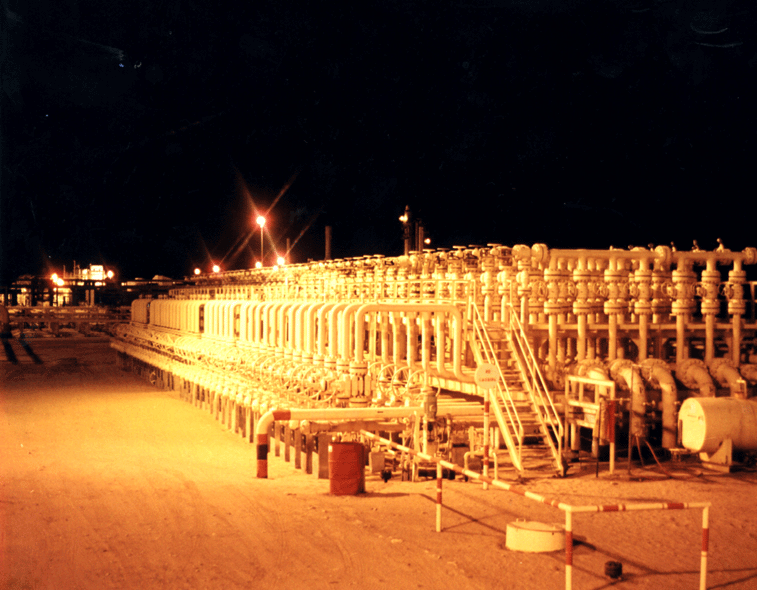
KPU consists of a production train (test separator and 7 high-pressure vessels), water disposal pumps, and a freshwater system. KPU is the collection station for Al-Raja and other small, remote fields.
Al-Raja is a high-pressure facility (more than 5,000 psi). It includes a manifold, testing vessels, and separators. The facility also includes one compressor.
Raydan is a low-pressure facility (less than 1000 psi). It includes several vessels of different pressures and 9 Ajax compressors for gas injection. Raydan also has several water pumps for disposal and several crude transfer pumps for sending oil to the CPU. ator System, Low-Pressure Manifold.
Kamil Production Unit (KPU)
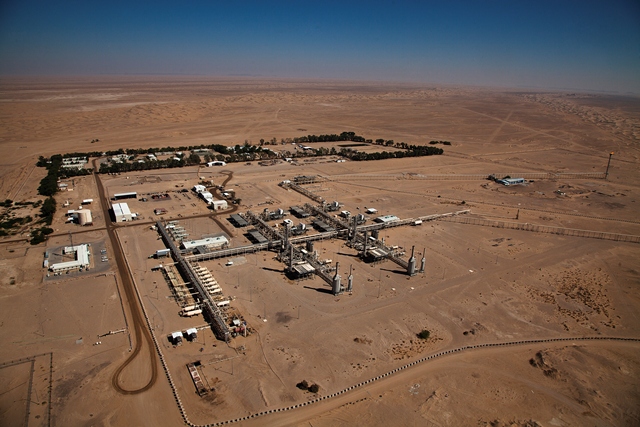
KPU consists of a production train (test separator and 7 high-pressure vessels), water disposal pumps, and a freshwater system. There are also two cryogenic gas plants and four Nuovo Pignone compressors for gas handling. KPU is the collection station for Al-Raja and other small, remote fields. There is a complete accommodation setup including recreation and sporting facilities
Al-Raja
Al-Raja is a high-pressure facility (more than 5,000 psi). It includes a manifold, testing vessels, and separators. The facility also includes two compressors: the first, a Nuovo Pignone, and the second, a Cooper Rolls Royce. Al-Raja has a complete personnel accommodation setup.
Raydan
Raydan is a low-pressure facility (less than 1000 psi).
It includes several vessels of different pressures and 9 Ajax compressors for gas injection.
Raydan also has several water pumps for disposal and several crude transfer pumps for sending oil to the CPU. Finally, the facility includes a 15,000 bbls storage tank and a 5000 bbls water tank.
Raydan has a complete personnel accommodation setup.
Al-Shura
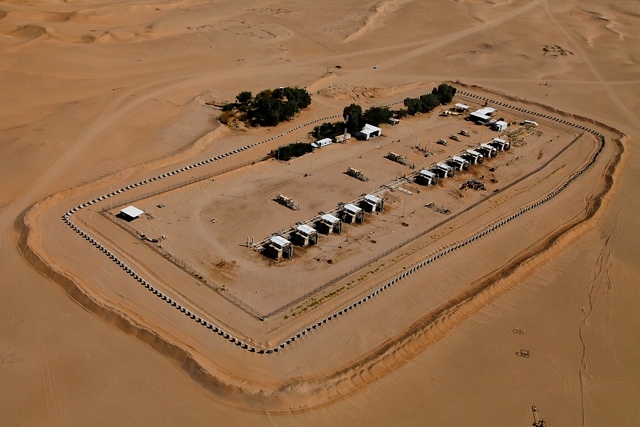
Al-Shura utilizes 6 Ajax compressors, several separators of low and high pressures, and a freshwater injection system.
SEPOC's Accomplishments in Well Maintenance Operations: A Look into Four Significant Achievements in 2018
20-11-2018
SEPOC's Well Maintenance Operations TeamOn the occasion of the establishment of Safer Exploration and Production Operations Company (SEPOC), we would like to extend our congratulations and present to you four significant and qualitative achievements for the year 2018, accomplished by the Engineering Production Group and the Well Maintenance Excavators Group since the resumption of oil and gas well maintenance operations.
Firstly, several works were executed in well cementing, including the procurement of cement and related mixing materials, as well as the preparation of necessary equipment locally. Cement plugs were placed to secure some wells, preserve their production, and use them in gas injection according to the designated programs. This achievement is considered unique, as it required the utilization of foreign service companies with their foreign experts, resulting in high financial costs.
Secondly, production pipeline replacement was carried out due to corrosion and rust caused by aging, which poses significant risks that may be difficult to control. Although foreign specialized companies usually participate in this work, the accomplishment this time was made possible due to the hard work put in by a national team of excavators who specialize in maintaining well-digging equipment. They confidently decided to repair and replace the damaged and corroded production pipelines, relying on Allah and then the qualifications of its Yemeni staff members who still need more advanced training in this field.
Thirdly, some devices and equipment used for oil well completion were adapted and utilized to secure the wells and maintain production, even under challenging conditions experienced by the nation.
Fourthly, significant achievements were made in the area of well cementing and maintenance through the hard work of a team of maintenance excavators who successfully executed a number of crucial projects in this field. These accomplishments have resulted in a considerable enhancement of production efficiency and a reduction in costs.
To summarize, despite the challenging circumstances experienced by the country, four notable and significant accomplishments were achieved in 2018 in the areas of well cementing, production pipeline replacement, device and equipment adaptation, and maintenance needs covered. These achievements were made possible through the hard work and dedication of the Engineering Production Group and the Well Maintenance Excavators Group.
Eng. Abdu Ahmed Hassan.
.
Workover Operations - Challenges and Achievements
19-10-2022
The question that poses itself" How could SEPOC workover activities continue during war conditions and in the absence of well cementing and other well services companies during the current company and country situation?”
The brief answer to this question is one-word "innovation"
In actual fact, these challenges did not only represent a hindrance to the workover team as much as they were an opportunity for this team to ingeniously create new ideas and creative solutions that would not have seen the light without those exceptionally difficult circumstances. This corresponds to the saying “Necessity is the mother of invention”
These creative solutions, which have started to flow continually since resuming the workover rig operations in mid-May 2018, have resulted in the continuation of regular workover activities and further improved the quality, efficiency, and kind of these operations.
Due to the absence of new wells drilling operations, the philosophy of SEPOC workover operations has changed to be based on the principle of (No Replacement for any well). Consequently, any well must be repaired by any possible safe procedure. This in turn led to the invention of new workover practices that had never been practiced in the SEPOC field before.
Below we may include some of these creative solutions as good experienced examples: -
- Building cement mixing and pumping equipment using the available company materials and equipment. Developing cement mixing procedures and cement equipment performance to keep cement jobs progressing with good quality.
- Performed more than 60 successful cement jobs during the last 4 years including cement plugs and casing leak repair cement squeeze.
- Replacing the top bad portion of production casing by casing back off without prima cord explosion. Every well has its unique challenges and problems.
- Using new low-cost and reliable drillable bridge plugs, cement retainers, and hydraulic set permanent packers manufactured by some Asian Companies
- Using the MHS packer as a mechanical barrier in place of a rental retrievable bridge plug (RBP) to secure wells to do the required work on the wellhead.
- Modifying Chamber Lift Mandrels (CLM) and Side Pocket Mandrels (SPM) for downhole freshwater injection systems repair.
- Inspecting, evaluating, and re-using the retrieved old tubing from the wells, either 3-1/2" API EUE tubing or 4-1/2" premium connection type saving the need for new tubing.
- Saving the permeant type packers (like Halliburton VSR or WB packers) in place in many gases’ injection or gas producer wells, by using work string with many modified fishing tools thru casing or thru tubing to retrieve stuck mechanical plug and prong in packer tailpipe.
- Replacing the bad top part of the surface casing by digging around the well to depths reached 60 ft below ground level.
- Mixing Water Based Mud (WBM), a new type of Loss Circulation Materials (LCM) & casing packs Oil Base Mud (OBM).
- performed several rig repairs using spare parts from the junkyard.
Construction and Completion of a New Crude Oil Storage Tank: Safer Company's Milestone Achievement
02-02-2025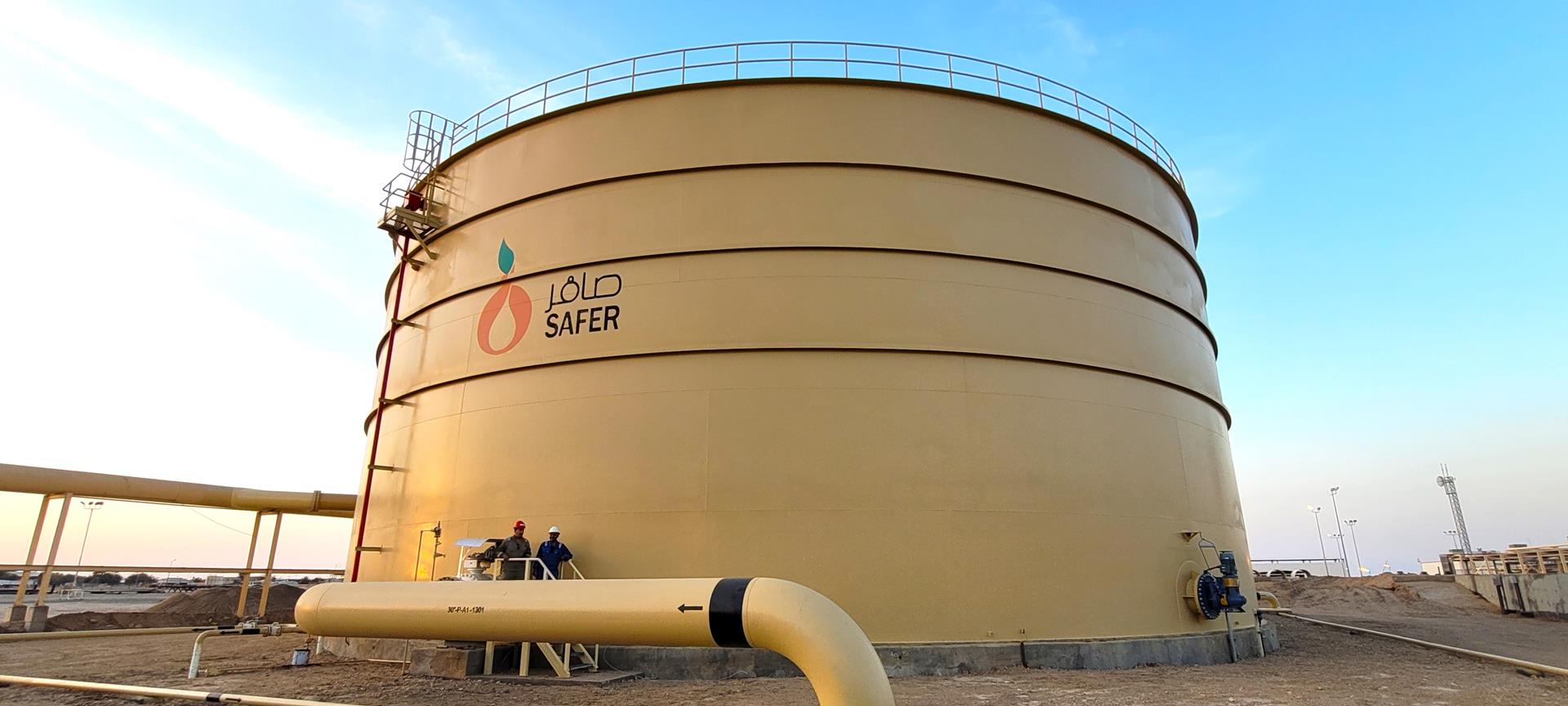
Origins of Safer Company's Strategic Success:
The project's origins trace back to June 2014 when Petrocell, an Indian company, initiated undertaking an engineering study commissioned by Safer Company to design an additional tank for crude oil production at the Central Processing Unit facilities- CPU, focusing on essential elements like capacity determination, material selection, and adherence to global standards such as API specifications and ISO quality norms besides the up-to-date oil and gas standards. Subsequently, in March 2021, a construction tender was released. Sun Temple Company secured the bid for civil work and executed various tasks including site surveys, excavation, leveling, and foundation construction, ensuring project stability and completion.
Meticulous Execution: -
Following the completion of civil construction, the mechanical works started and were handled by Western Tank Company in October 2021. Safer Company's national engineering and technical teams demonstrated their expertise by successfully finalizing the remaining tasks. These tasks encompassed various critical activities, including electrical systems installation, instrumentation setup, safety device implementation, pipe and valve installation, installing a cathodic protection system, and coating and insulation work. Additionally, the teams seamlessly integrated the new tank with existing infrastructure, conducted hydrostatic tank testing, and performed trial operations to guarantee optimal performance, safety, and functionality of the tank.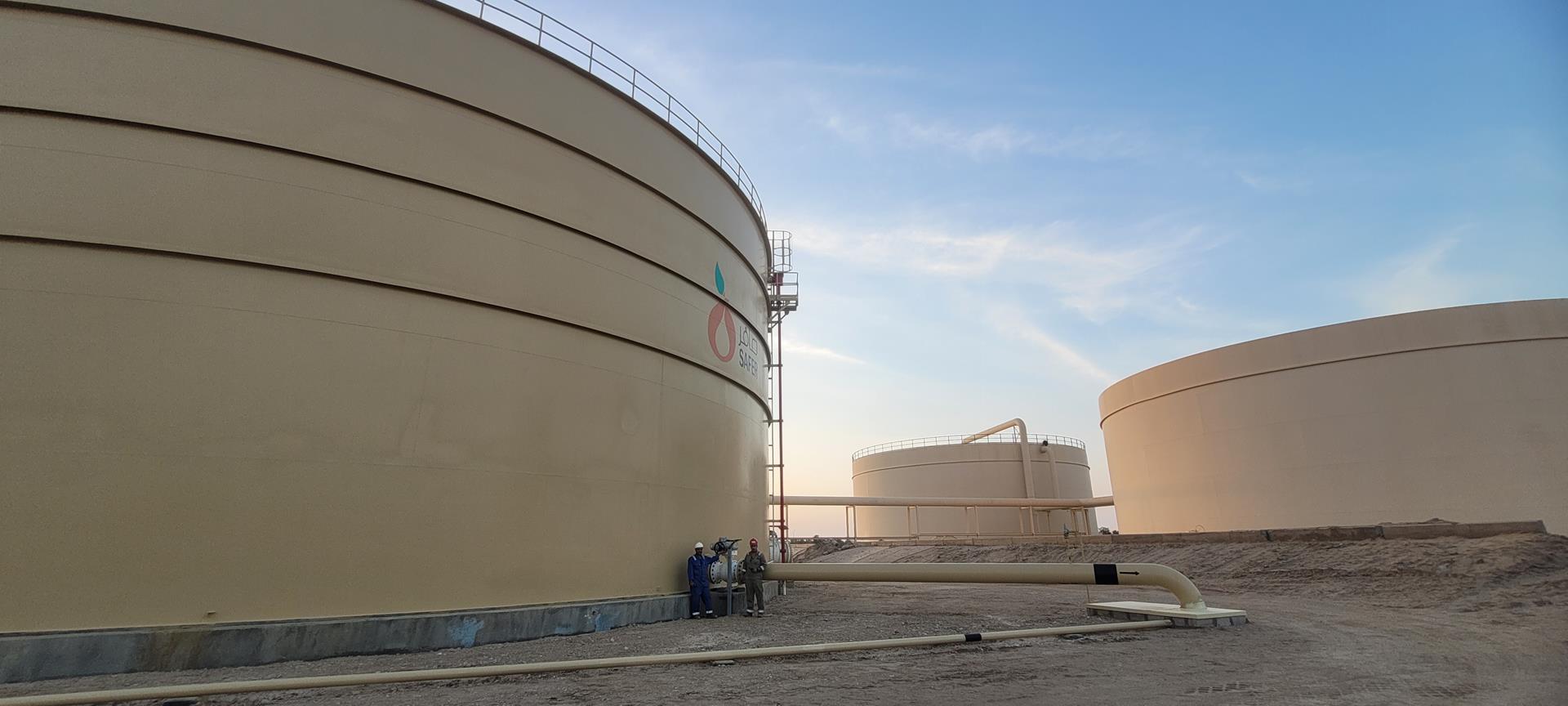
Focus on Safety Measures:
Safety remained paramount throughout the construction and finalization phases. Strict protocols were implemented, encompassing electrical systems, instrumentation, safety devices, and hydrostatic tank testing. These measures were crucial in guaranteeing the tank's operational readiness and adherence to updated oil and gas standards.
Yemeni Staff Contributions:
Yemeni staff members' remarkable contributions played a key role in this project's success. Their dedication and expertise significantly contributed to the tank's construction and readiness for operation.
Future Enhancements:
Looking ahead, Safer Company remains committed to optimizing the tank's functionality and efficiency further. Plans for enhancements and continued adherence to safety protocols underscore the company's dedication to operational excellence and industry leadership.
The new crude oil tank put into service on January 1, 2025, marks a significant milestone for Safer Company, reflecting its unwavering commitment to excellence and innovation in the oil and gas sector.